Community-based tourism is a type of travel that offers visitors exciting experiences by immersing themselves in the lives of local people, gaining a deeper understanding of the region’s culture and its people. This article by Visa FOPA will summarize and share the trending forms of community-based tourism in 2024.

I. What is community-based tourism?
A form of travel that involves the participation of local communities in the supply chain and management process. This model develops based on the inherent cultural values of the area and is organized and operated by local residents.
Specifically, travelers can immerse themselves in the daily lives of the locals, enjoy local accommodations, and participate in communal activities. This offers visitors the opportunity to explore and understand the culture, identity, and traditional values of the destination.
In Vietnam, it is gradually becoming a popular trend, attracting many travelers. Numerous regions in Vietnam, such as the Central Highlands, the Mekong Delta, and the Northwest, have adopted this model. Revenue from CBT not only provides additional income for locals and fosters sustainable economic growth but also helps preserve local resources and heritage values.
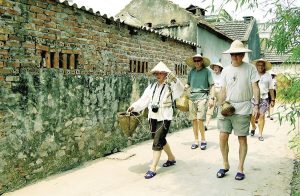
II. Types of Community-Based Tourism Today
- Ecotourism
This form of tourism relies on nature and is closely tied to local cultural identities, with community participation to ensure sustainable development. Visitors to ecotourism destinations can explore the culture, admire local landscapes, and engage with the natural environment. - Cultural Tourism
Cultural tourism focuses on the history, archaeology, and culture of a locality. Visitors choosing this form of tourism can learn about the region’s unique cultural features through guided tours, explore historic events, visit famous religious sites, and discover archaeological relics preserved from ancient times.
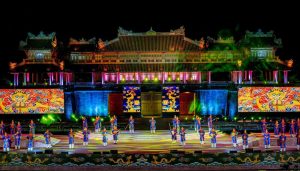
- Agricultural Tourism
Agricultural tourism revolves around farming activities. Visitors explore agricultural areas such as livestock farms or fruit orchards and participate in hands-on activities with local residents. These destinations develop various services to cater to tourist needs, following the community-based tourism model.
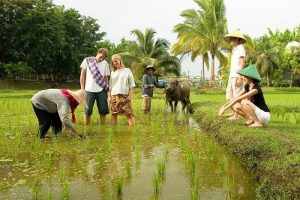
- Ethnic and Indigenous Tourism
This type of tourism is managed and operated by local residents or ethnic minority groups. The main draw for visitors is the unique local culture, which serves as the most crucial element in attracting tourists to explore and experience.
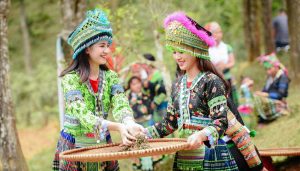
- Village Tourism
Village tourism allows travelers to visit rural villages or traditional craft villages in Vietnam. Visitors can live with the locals and take part in traditional activities and daily routines, offering an authentic experience of village life.
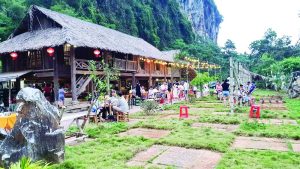
- Art and Handicraft Tourism
This form of tourism gives visitors the chance to learn about art and handicrafts. Activities include visiting cultural relics, craft centers, or production workshops, as well as participating in hands-on sessions to create traditional handmade products.
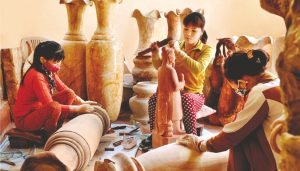
III. Famous Community-Based Tourism Destinations in Vietnam
1. KoTam Ecotourism Community – Đắk Lắk
Immerse yourself in the pristine beauty of the Central Highlands at KoTam. This destination features vibrant flower forests, serene lakes, and traditional stilt houses with unique architecture. Visitors can explore the lives of the Ê Đê and Gia Rai ethnic groups, admire traditional artworks and musical instruments, and join cultural events like elephant worship ceremonies, water rituals, and boat racing festivals.
2. Suối Tranh Ecotourism Area – Phú Quốc
Nestled amidst mountains and forests, Suối Tranh offers tranquil landscapes with white waterfalls and melodious birdsong. This picturesque spot provides a peaceful escape and exciting activities such as stream bathing, fishing, camping, forest trekking, and exploring Bat Cave.

3. Trà Quế Vegetable Village – Hội An
Located in Trà Quế Village, Cẩm Hà Ward, Hội An, this community-based tourism destination attracts numerous visitors. Famous for its lush, fresh vegetable gardens, the village offers captivating hands-on farming experiences.
Visitors can learn how to till the soil, plant seeds, water crops, and harvest produce, experiencing the daily life of local farmers. They can also stroll along peaceful village paths, relax in a bamboo hut, and enjoy a cup of fragrant tea.
4. Quỳnh Sơn Community Tourism Village – Lạng Sơn
About 80 km from Lạng Sơn city, Quỳnh Sơn Village is home to breathtaking natural landscapes, featuring caves within mountains and flat valleys. Visitors stay in traditional stilt houses with the Tày ethnic community, gaining insight into their culture.
Here, tourists can enjoy local traditions such as Then singing, đàn Tính performances, and participate in festivals like the Field-Going Festival, Village Deity Procession, and Peace-Praying Ceremony. Guests can also engage in farming activities such as rice milling and husking alongside locals.

>>>Lang Son Tour Guide 2024: Explore “The land of valleys with most beautiful high mountains”
5. Cồn Sơn Community Tourism Village – Cần Thơ
Cồn Sơn in Cần Thơ is a renowned destination in the Mekong Delta. Visitors can experience the simple and tranquil riverine lifestyle by exploring the care and harvesting of fruits, fish, and shrimp. Exciting activities include catching snails, crabs, and fish in the local waterways.
Surrounded by peaceful scenery and the warm hospitality of the locals, visitors can enjoy fresh fruits like lychee and ripe rambutans straight from the garden. Additionally, guests can try their hand at making traditional Mekong delicacies, such as bánh bò (sponge cake), bánh da lợn (layered cake), and bánh xèo (sizzling pancake).
6. Nặm Đăm Community Tourism Village – Hà Giang
Nestled in Hà Giang, Nặm Đăm is a quaint village featuring rustic stilt houses set peacefully at the foot of hills. It offers a serene and picturesque setting that enchants visitors.
Travelers can savor mountain cuisine, learn about the simple yet unique local customs of the Dao ethnic group, and wear beautifully hand-embroidered traditional outfits. Activities like trekking, foraging for bamboo shoots, and relaxing with herbal baths further enhance the experience.
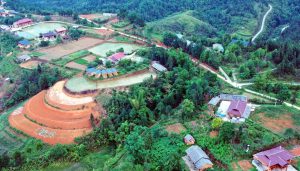
In summary, community-based tourism is a sustainable form of travel that fosters connections between visitors and local residents. It is not only a means of relaxation and entertainment but also contributes to environmental protection, economic development, and the preservation of local traditions. In 2024, community-based tourism is expected to become a preferred trend among travelers.
![]() Visa FOPA Company
Visa FOPA Company
📞+84 906 044 975 (Mr. Do)


